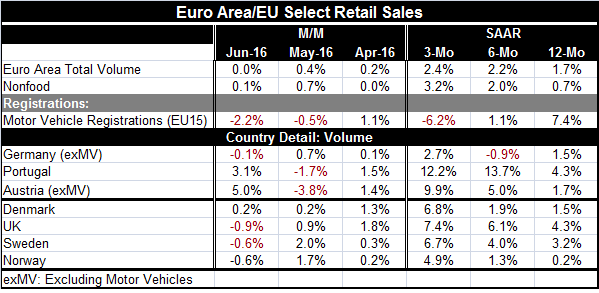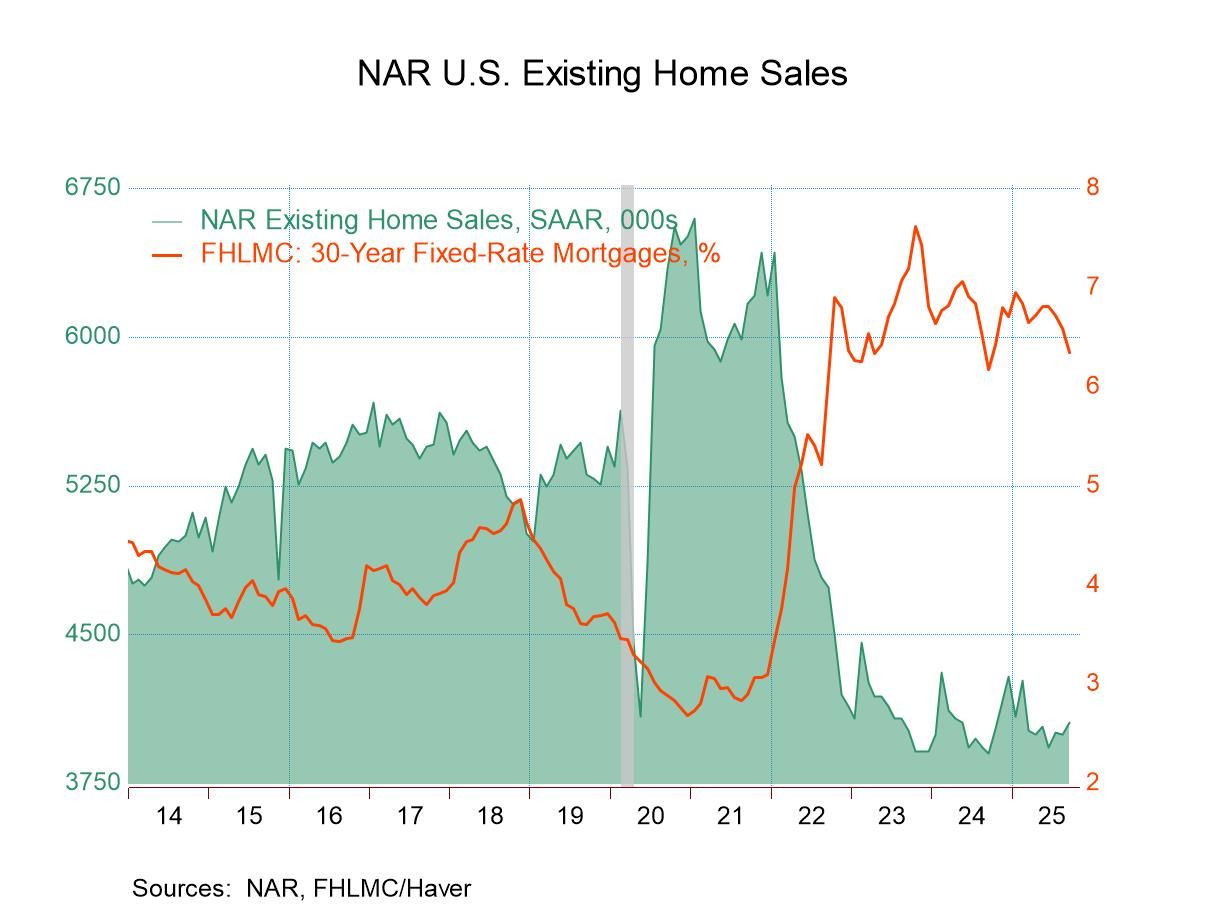 Global| Aug 03 2016
Global| Aug 03 2016Euro Area Retail Sales Rise
Summary
Retail sales volumes show a slight acceleration in play for total euro area sales volumes from 12-months through three-months. The accelerating trend holds for nonfood products as well. The acceleration trend is being bucked by motor [...]
 Retail sales volumes show a slight acceleration in play for total euro area sales volumes from 12-months through three-months. The accelerating trend holds for nonfood products as well. The acceleration trend is being bucked by motor vehicle registrations that are decelerating and contracting over three-months.
Retail sales volumes show a slight acceleration in play for total euro area sales volumes from 12-months through three-months. The accelerating trend holds for nonfood products as well. The acceleration trend is being bucked by motor vehicle registrations that are decelerating and contracting over three-months.
Country level data show accelerations in play across nearly all the reporters in the table. All have the pace of three-month sales faster than six-month sales. And only one, Germany, has sales growth weaker over three-months than over 12-months. But three-month sales gains may be boosted in these calculations by recent volatility and by the base level for sales three months ago being depressed (sales in March fell by 0.6%).
The chart is not as kind to the interpretation of these trends. While sales are showing this broad-based acceleration, they also are showing signs of topping as volume levels show signs of coalescing around current levels. This tendency is present for both auto registrations and for retail sales.
This trend overall and these country-level trends in retail spending are much stronger than consumer confidence has been in the monthly EU consumer confidence reports. But the EU indexes have been giving very favorable marks to the retailing sector for some time.
Still, the retail sales volume index for the EMU is only back to the range it has occupied prior to the onset of the great recession in the U.S. and global financial crisis (see Chart). Despite the strong recovery, especially since 2014, there has been no growth in the sector peak to peak for nine years. And now there is some sign that the surge in sales may be abating despite the still accelerating growth rates. Retailing has been the driving force of the European recovery and this sector is definitely one watch. It is also a key sector to monitor because retail shopping is an activity that could easily be adversely affected if people start to feel unsafe in the wake of some of the terror attacks and migrant issues in European countries.

Robert Brusca
AuthorMore in Author Profile »Robert A. Brusca is Chief Economist of Fact and Opinion Economics, a consulting firm he founded in Manhattan. He has been an economist on Wall Street for over 25 years. He has visited central banking and large institutional clients in over 30 countries in his career as an economist. Mr. Brusca was a Divisional Research Chief at the Federal Reserve Bank of NY (Chief of the International Financial markets Division), a Fed Watcher at Irving Trust and Chief Economist at Nikko Securities International. He is widely quoted and appears in various media. Mr. Brusca holds an MA and Ph.D. in economics from Michigan State University and a BA in Economics from the University of Michigan. His research pursues his strong interests in non aligned policy economics as well as international economics. FAO Economics’ research targets investors to assist them in making better investment decisions in stocks, bonds and in a variety of international assets. The company does not manage money and has no conflicts in giving economic advice.






